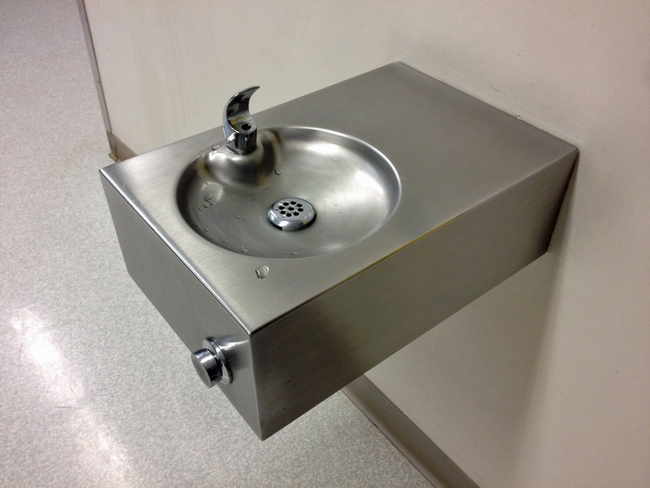The first study of California law that requires schools to test tap water for lead found that the majority completed the testing on time, and only 3% reported any tested taps with lead in the water higher than the state's 15 parts per billion (ppb) limit. About 30% of the 240 randomly selected public schools in the study didn't report their results within three months of the deadline.
The study, Water Safety in California Public Schools Following Implementation of School Drinking Water Policies, was published in the January issue of Preventing Chronic Disease, a Centers for Disease Control and Prevention online publication.
Christina Hecht of the UC Nutrition Policy Institute, one of the study's co-authors, said she was heartened by the results, and acknowledged there is more work to do.
“Because we strongly encourage people to drink water rather than sugary beverages, we need to have confidence that tap water is safe,” she said. “But this is a complex issue with shared responsibility among public water systems, school administrators and regulating agencies.”
Access to safe drinking water in schools is essential to help avoid the developmental and health consequences for children associated with consuming contaminated water, under hydration or excessive intake of sugary beverages.
Schools that get water from public utilities can expect the water they receive to meet federal and state water quality standards. However, 16% of study schools received water from a utility that violated health-based standards, such as elevated levels of contaminants or failure to adhere to disinfectant protocols. When water flows into buildings through pipes that contain lead – such as those made entirely of lead, or galvanized iron or leaded brass, or connected with lead solder – and especially when water sits stagnant in lead-containing plumbing, lead may leach into the water before it flows from the tap.
In October 2017, California passed Assembly Bill 746, which mandated that public water utilities sample and test for lead in tap water of public schools that were built before 2010. The law is designed to identify and mitigate sources of lead in water. Funds to upgrade school drinking-water plumbing were also earmarked in the state budget. Working with their local water suppliers, the schools selected taps for sampling. The number of taps that released water with lead was very low, and even those sources are not necessarily unhealthy for drinking, Hecht said.
“When we test tap water, we're not talking about every drop of water that comes from the tap,” she said. “We test the first water that comes out of the tap after it has been stagnant in the pipes. Once the taps are in use and water is flowing, the lead level should drop dramatically.”
Although few schools (3%) had even one tap in violation of California state standards for lead, violations increased to 16% when the federal Food and Drug Administration standard for bottled water was applied. The FDA requires that bottled water not exceed 5 ppb of lead.
The 174 schools in the study collectively tested 1,238 independent water sources – such as playground, hallway and gym drinking fountains, classroom faucets, food service areas and restroom taps in 2019. Some of the tests took place in locations that serve staff, such as teachers' lounges, nurses' stations, distribution sources and maintenance areas. Without detailed guidelines to follow, some schools tested only 1 tap; others tested as many as 76.
“Testing only a subset of taps in a facility prevents full identification of which schools need to undertake lead remediation actions,” Hecht said.
Hecht and her co-authors – Isioma Umunna, Anisha Patel and Lauren Blacker of Stanford University, Marc Edwards of Virginia Tech, and Emily Altman of UC Berkeley – conclude that, in the future, states should require schools to test to nondetectable levels of lead for maximum data collection and require that at least one water source in food service areas be tested.
The information and recommendations from the study are already informing California legislation designed to protect children from lead exposure from water. A new law, Assembly Bill 2370, will require all licensed childcare centers to test taps for lead by 2021 and every 5 years thereafter. The inconsistencies experienced in AB 746 compliance revealed the need for detailed guidelines on the number of taps facilities should test, the required locations for testing, clear naming conventions to identify taps and reporting procedures.
